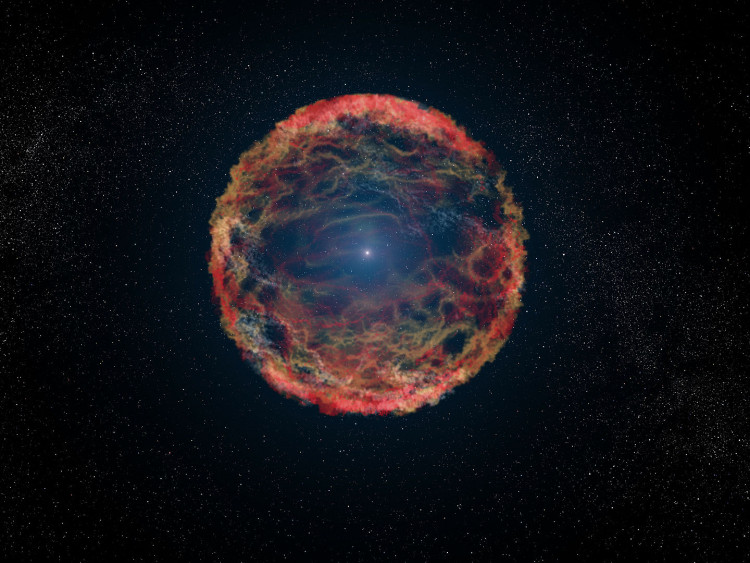Meteorological satellites orbiting Earth may have an added function: to observe stars.
This is the conclusion of a new paper that gives new data from a Japanese weather satellite that happened to observe the red supergiant star Betelgeuse during an inexplicable dimming episode.
The coincidental observations could provide astronomers with a new tool to better understand how a red supergiant star loses mass and eventually explodes as a supernova.
Betelgeuse is the second brightest star in Orion's constellation and the 10th brightest star in the night sky. However, from October 2019 to February 2020, it decreased to around two-thirds of its previous brightness.
This "great dimming" event fueled predictions that it was poised to explode as a Type IIP supernova, which it will very probably do within the next 100,000 years.
Ground-based telescopes cannot see through the universe' dust and gas, which necessitates infrared vision. Because the Earth's atmosphere absorbs infrared light, as well as X-rays, gamma rays, and the vast majority of UV rays. Only space-based observatories, such as Himawari-8, a geostationary meteorological satellite operated by the Japan Meteorological Agency, can sense infrared light.
Since 2015, Himawari-8 has been orbiting Earth 22,236 miles (35,786 kilometers) above the equator, studying weather and natural disasters (including the Jan. 15 eruption of the Hunga Tonga-Hunga Haapai volcano). The satellite is up there every 10 minutes to picture Earth, but the edges of its images include stars.
"We saw a tweet stating that the moon was in its images," Daisuke Taniguchi, a Ph.D. student in astronomy at the University of Tokyo and first author of the paper, told Space.com. "I chatted with [third author] Shinsuke Uno on the usage of meteorological satellites for astronomy, found Betelgeuse is in the field of view of Himawari-8 and realized that maybe the Great Dimming of Betelgeuse could be investigated."
Taniguchi and his colleagues observed Betelgeuse in photos acquired throughout Himawari-8's lifetime and monitored its brightness approximately every 1.7 days between January 2017 and June 2021.
The new findings of the scientists imply that meteorological satellites could be employed as space telescopes for astronomy.
"It enables us to obtain high-cadence time series of mid-infrared images, which are hard to acquire with the usual astronomical instruments," reads the paper.
As well as not being able to record near-infrared data, ground-based telescopes lose sight of some stars for a few months as the sun drifts in front of them.
The research is described in a paper published in the journal Nature Astronomy.




